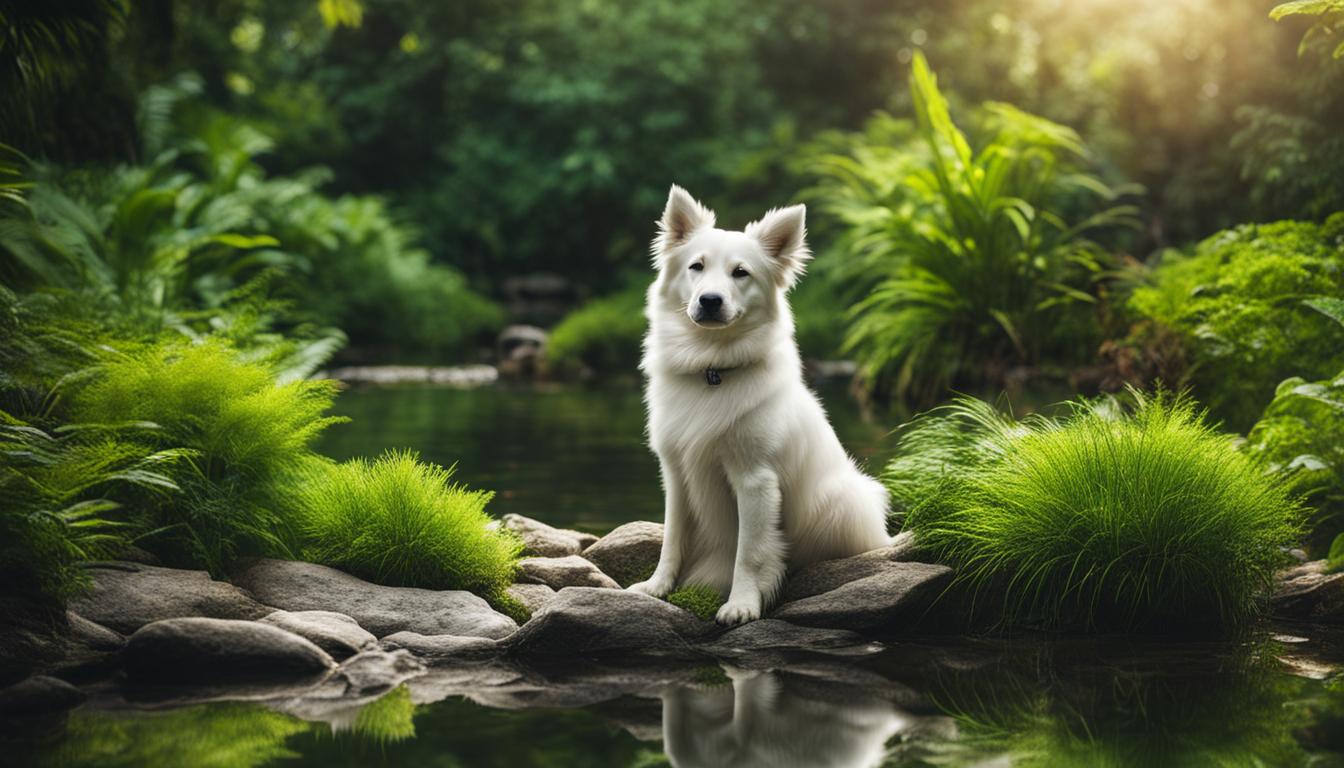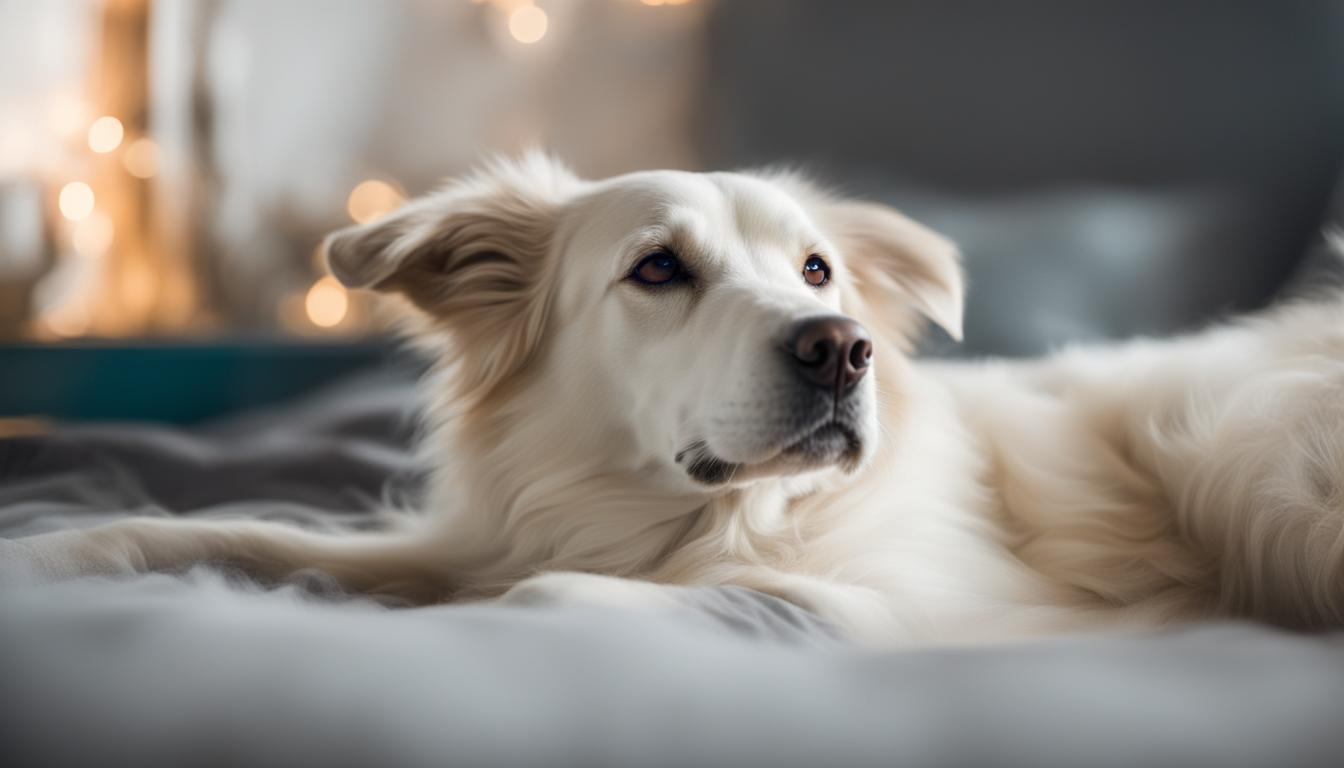Pet grooming is not just about keeping our furry companions clean and healthy; it’s also an expression of culture and tradition. Different cultures around the world have their unique grooming practices and techniques that reflect their beliefs and values. In this article, we delve into the fascinating world of cultural dog grooming and explore how these practices shape the way we care for our four-legged friends.
From practical maintenance to elaborate artistic expressions, cultural dog grooming styles abound, each with its own purpose and significance. Some cultures prioritize functionality, ensuring the dog’s coat is clean and free of mats, while others focus on aesthetics, creating intricate hairstyles and patterns using various grooming techniques. Every grooming style tells a story, reflecting the cultural identity, creativity, and personal preferences of the people behind it.
But cultural dog grooming goes beyond personal choice. It has social implications too. In some cultures, a well-groomed dog is a symbol of status and wealth, indicating an owner’s ability to provide the best care for their companions. Moreover, cultural grooming practices often shape societal perceptions and stereotypes associated with specific breeds or grooming styles. Understanding these cultural impacts helps us appreciate the significance of pet grooming in different societies.
So let’s embark on a journey around the world to explore the diverse ways dogs are groomed and the importance placed on their appearance in different cultures. Discover the rich tapestry of cultural dog grooming and gain new insights into the bond between humans and their furry companions.
Key Takeaways:
- Cultural dog grooming styles reflect traditions, creativity, and personal preferences.
- Grooming practices differ across cultures, focusing on functionality or aesthetics.
- Well-groomed dogs can symbolize status and wealth in certain societies.
- Cultural grooming practices influence societal perceptions and stereotypes.
- Exploring cultural dog grooming enhances our understanding of the human-dog bond.
Traditional Grooming Methods Worldwide
Dog grooming techniques vary significantly across different cultures. In some countries, dogs are groomed to maintain their appearance for specific cultural events or rituals. For example, in Japan, the traditional grooming method for certain breeds involves intricate patterns and designs shaved into their fur. In India, certain breeds are groomed with henna to enhance their beauty. Furthermore, different grooming tools and practices are utilized worldwide, such as using specific types of scissors or brushes to cater to the unique needs of each dog’s coat. These cultural variations in dog grooming highlight the rich diversity and traditions associated with pet care.
Table:
| Culture | Grooming Method | Key Features |
|---|---|---|
| Japan | Intricate patterns and designs shaved into fur | Emphasis on artistic expression and attention to detail |
| India | Grooming with henna | Enhances beauty and adds a touch of cultural flair |
| China | Lion Cut for certain breeds | Provides a regal and majestic appearance |
| Sweden | Minimal trimming and styling | Favors a natural and understated approach |
The Cultural Dog Grooming Styles
Cultural grooming styles for dogs can range from practical maintenance to elaborate artistic expressions. In some cultures, grooming practices focus on functionality, such as keeping the dog’s coat clean and free of mats. In contrast, other cultures prioritize aesthetics and create intricate hairstyles or patterns using various grooming techniques. For instance, the Poodle breed is often groomed in different styles globally, such as the Continental Clip, the English Saddle Clip, or the Puppy Clip. These unique grooming practices not only enhance the dog’s appearance but also serve as a way to express cultural identity and creativity.
“The beauty of cultural dog grooming lies in its ability to showcase the diverse ways in which people around the world care for and present their canine companions.” – Pet Grooming Expert
The cultural impact on pet grooming extends beyond individual preferences and practices. In some cultures, a well-groomed dog is seen as a symbol of status and wealth, reflecting the owner’s ability to provide care and luxury for their pet. Additionally, cultural grooming practices can influence societal perceptions and stereotypes associated with specific breeds or grooming styles. Understanding these cultural influences allows for a deeper appreciation of the social dynamics and perceptions surrounding dogs and their appearance.
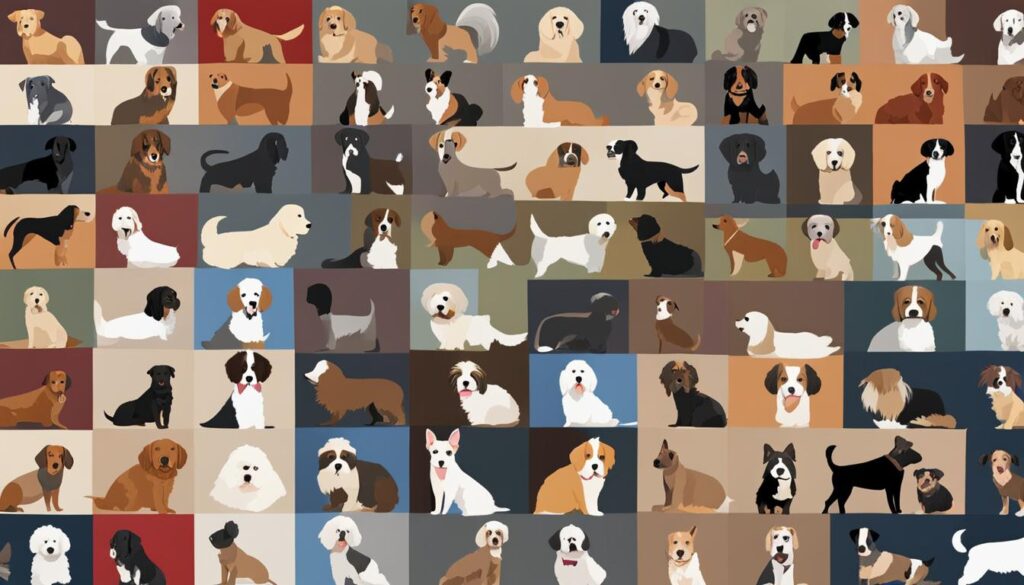
Overall, cultural dog grooming practices highlight the diversity and richness of traditions worldwide. From functional maintenance to intricate styling, different cultures have unique approaches to dog grooming that reflect their traditions, personal preferences, and societal norms. By appreciating the global variations in dog grooming, we can gain a better understanding of the bond between humans and their furry companions, as well as celebrate the cultural heritage intertwined with pet care.
Cultural Dog Grooming Styles
When it comes to grooming our beloved furry friends, cultures around the world have developed unique and fascinating practices that go beyond mere maintenance. From practical coat care to elaborate artistic expressions, cultural dog grooming styles showcase the diverse ways in which dogs are pampered and adorned. Let’s take a closer look at some of these cross-cultural grooming techniques that highlight the creativity and passion of dog owners worldwide.
Cultural Variations in Grooming Styles
Every culture has its own distinct approach to dog grooming, with some focusing on functionality and others prioritizing aesthetics. In certain cultures, grooming practices are primarily geared toward keeping the dog’s coat clean and free of mats, ensuring their comfort and well-being. On the other hand, some cultures embrace intricate hairstyles and patterns as a way to showcase their cultural identity and creativity through their dogs’ appearance.
One excellent example of cultural grooming styles is the Poodle breed, which is groomed in various unique styles across the globe. The Continental Clip, known for its flamboyant appearance with shaved legs and a pompom tail, originated in France. The English Saddle Clip, characterized by a shaved back and fluffy leg and tail pompons, is another popular Poodle grooming style seen in different cultures. And for those looking for a more youthful and cute look, the Puppy Clip involves trimming the entire coat to a uniform length.
Cross-Cultural Dog Grooming Techniques
The world of dog grooming is full of diversity, and cross-cultural techniques offer a wealth of inspiration for pet owners and groomers alike. From Asian-inspired cuts that blend traditional artistry with modern grooming tools to creative patterns popular in some parts of Africa, these techniques showcase the craftsmanship and passion of groomers who strive to bring out the unique beauty of each dog.
It’s fascinating to see how different cultures incorporate their artistic traditions into dog grooming. For instance, in Japan, certain grooming practices draw inspiration from the art of bonsai and ikebana, resulting in meticulously sculpted fur designs that elevate grooming to a true art form. These cross-cultural dog grooming techniques not only enhance the appearance of our furry companions but also give us a glimpse into the rich tapestry of cultural practices around the world.
| Grooming Style | Origin |
|---|---|
| Continental Clip | France |
| English Saddle Clip | Various cultures |
| Puppy Clip | Global |
As dog lovers, we can celebrate the unique dog grooming practices found in different cultures. These grooming styles reflect not only the beauty and artistry of pet care but also the deep connection between humans and their furry companions. By embracing and appreciating the diversity of cross-cultural dog grooming techniques, we can continue to learn, grow, and seek inspiration in our own grooming routines.
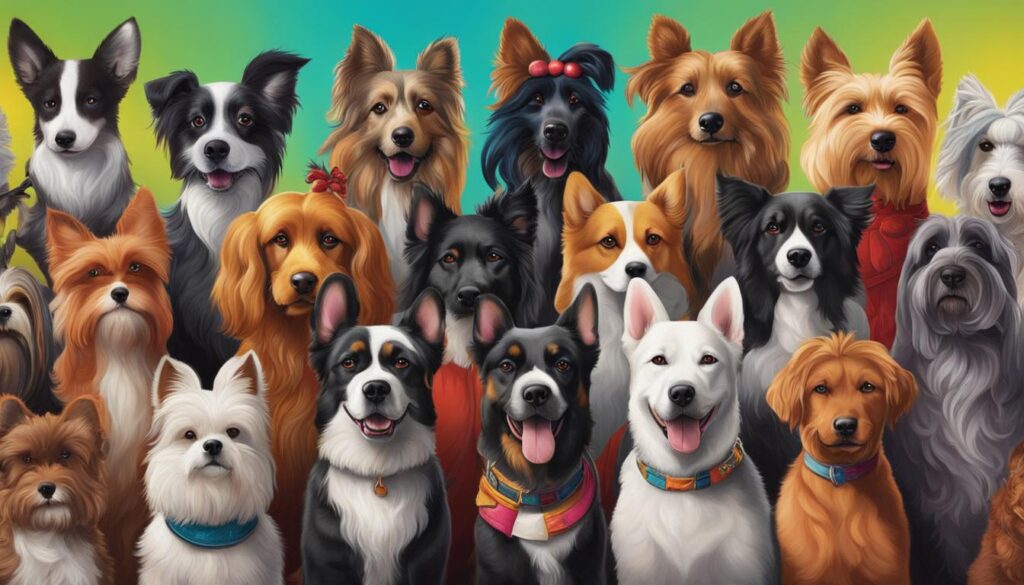
Cultural Impacts on Pet Grooming
Culture plays a significant role in shaping the way pet owners approach grooming for their dogs. Different cultures have varying perspectives on the importance of grooming and the specific grooming practices they adopt. These cultural impacts on pet grooming not only reflect individual preferences but also shape societal norms and perceptions surrounding dogs and their appearance.
In some cultures, grooming is seen as an essential aspect of pet care and is given utmost importance. Dog owners in these cultures often make regular visits to professional groomers and prioritize meticulous coat maintenance. These practices highlight the significance placed on grooming as a means of ensuring the health, cleanliness, and overall well-being of dogs.
On the other hand, in certain cultures, grooming may be less emphasized, and dogs are often allowed to have a more natural appearance. This relaxed approach to grooming is influenced by factors such as climate, cultural norms, and personal preferences. Some cultures prioritize functionality, focusing on keeping the dog’s coat clean and free of mats, while others embrace elaborate grooming styles that serve as a way to express creativity and cultural identity.
| Cultural Impact | Grooming Approach |
|---|---|
| High Importance | Regular visits to professional groomers, meticulous coat maintenance |
| Less Emphasized | Natural appearance, relaxed grooming practices |
| Cultural Identity | Elaborate grooming styles, creative expressions |
Understanding these cultural impacts on pet grooming provides valuable insights into the diverse ways dogs are cared for and the varying levels of importance placed on dog coat care. It allows us to appreciate the rich tapestry of cultural dog grooming practices and the global influences that shape pet care worldwide.
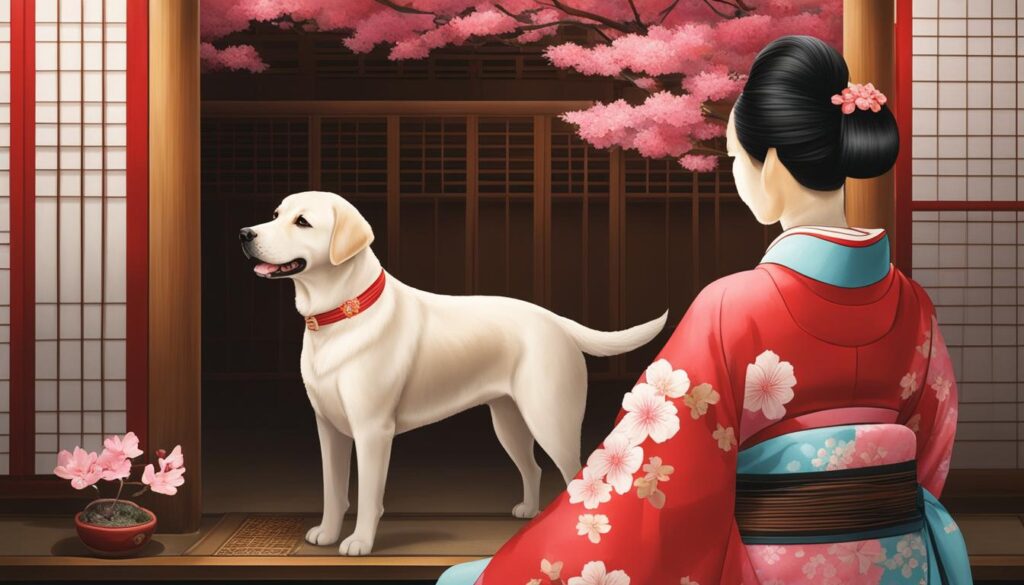
Key Takeaways:
- Culture influences the way pet owners perceive and prioritize grooming for their dogs.
- Some cultures emphasize the importance of grooming, while others have a more relaxed approach.
- Grooming practices reflect individual preferences, cultural norms, and societal perceptions.
- Understanding cultural impacts on pet grooming enhances our appreciation for the diversity in grooming practices and the significance placed on dog coat care worldwide.
Dog Grooming in Different Cultures
Across the globe, dog grooming practices vary dramatically, reflecting the rich cultural diversity and unique traditions of each region. From elaborate stylings to more natural approaches, different cultures have their own distinct ways of grooming dogs. Let’s explore some fascinating examples of dog grooming in different cultures and the global influence on these practices.
Japan: The Artistry of Dog Grooming
In Japan, dog grooming is elevated to an art form. Certain breeds, such as the Shih Tzu and Poodle, are meticulously groomed to achieve intricate patterns and designs shaved onto their fur. This traditional grooming method, known as “Japan Style,” showcases the skill and creativity of Japanese groomers. These artistic expressions not only enhance the dog’s appearance but also reflect the importance of aesthetics in Japanese culture.
India: Embracing Natural Beauty
Contrasting the elaborate grooming styles in Japan, India embraces a more natural approach to dog grooming. Dogs are often groomed to maintain cleanliness and health but are typically left with their natural coat styles. Some breeds, like the Indian Pariah dog, are revered for their natural beauty, and grooming practices focus on keeping their coats clean and free of mats.
| Cultural Grooming Style | Country | Description |
|---|---|---|
| Japan Style | Japan | Intricate patterns and designs shaved onto the fur |
| Natural Coat Care | India | Emphasis on maintaining cleanliness and health while preserving the natural beauty of the coat |
Sweden: Minimalist and Practical
In Sweden, dog grooming takes a minimalist and practical approach. Dogs are often groomed to maintain functionality, prioritizing cleanliness and comfort over elaborate styling. Trimming and shaping are kept minimal, ensuring the dog’s natural appearance is preserved while maintaining a neat and healthy coat.
These examples highlight the global influence on dog grooming and the fascinating ways different cultures express their love and care for their canine companions. Whether it’s the artistic flair of Japan, the embrace of natural beauty in India, or the practicality of Sweden, cultural influences shape the diverse approaches to dog grooming around the world.
Cultural Dog Grooming and Social Impact
Cultural grooming practices for dogs go beyond personal preferences and have a significant impact on social dynamics. In many cultures, a well-groomed dog is seen as a symbol of status and wealth, showcasing the owner’s ability to provide luxury and care for their beloved companion. The emphasis placed on grooming reflects cultural values and societal expectations related to pet care. It also influences the perceptions and stereotypes associated with specific breeds and grooming styles.
For example, in some cultures, certain breeds are traditionally groomed in particular ways to adhere to cultural standards. In China, the Lion Cut is a popular grooming style for certain breeds, giving them a regal and majestic appearance. This grooming choice not only enhances the dog’s aesthetics but also reflects the cultural significance of lions and their symbolism in Chinese culture.
“A well-groomed dog is a reflection of its owner’s status and ability to provide care and luxury.”
Understanding these cultural influences on pet grooming allows us to appreciate the diverse perspectives surrounding dogs and their appearance. It highlights the interconnectedness between human culture and the ways in which we care for our furry companions. By recognizing the social impact of cultural dog grooming, we can gain a deeper understanding of how dogs are perceived and valued within different societies.

It is important to note that cultural dog grooming practices should be approached with respect and an understanding of their significance. They are not merely trends or fashion statements but rather deeply rooted expressions of cultural identity and values. By embracing the rich tapestry of cultural dog grooming, we can celebrate the global influences that shape pet care and enhance our appreciation for the bond between humans and their furry companions.
Conclusion
Cultural dog grooming practices have a significant impact on the way dogs are cared for and presented worldwide. From functional maintenance to intricate styling, different cultures have their unique approaches to dog grooming. These practices reflect cultural traditions, personal preferences, and societal norms.
Understanding the cultural variations in dog grooming provides valuable insights into the diverse ways dogs are groomed and the importance placed on their appearance in different cultures. It allows us to appreciate the beauty and creativity in traditional grooming methods worldwide. Whether it’s the elaborate patterns in Japan or the henna-enhanced beauty in India, cultural impacts on pet grooming add an extra layer of uniqueness to our furry companions.
By celebrating the rich tapestry of cultural dog grooming, we can deepen our understanding and connection with our pets. It also highlights the global influences that shape pet care and enhances our appreciation for the bond between humans and their furry friends. So, embrace the cultural diversity in dog grooming and let your pet’s appearance become a reflection of your shared experiences and the beauty of different traditions.
FAQ
Why is pet grooming important?
Pet grooming is essential for maintaining the health and well-being of companion animals. It helps prevent issues like skin irritation, infections, and fur matting.
How do cultural influences affect dog grooming techniques?
Different cultures around the world have unique grooming practices influenced by their traditions and beliefs. This diversity is reflected in the methods used to care for dogs’ coats and enhance their appearance.
What are some examples of cultural grooming styles for dogs?
In Japan, certain breeds have intricate patterns shaved into their fur, while in India, henna is used to enhance the beauty of certain breeds. Different countries also favor specific grooming styles, like the Lion Cut in China and a more natural approach in Sweden.
How do cultural grooming practices vary?
Some cultures prioritize functionality, focusing on keeping the dog’s coat clean and free of mats, while others prioritize aesthetics and create elaborate hairstyles or patterns using various grooming techniques.
Does culture influence how pet owners perceive grooming for their dogs?
Yes, cultural influences shape the importance pet owners place on grooming. Some cultures emphasize regular visits to professional groomers and meticulous coat maintenance, while others may allow for a more natural appearance.
Do cultural grooming practices have social implications?
Yes, a well-groomed dog can be seen as a symbol of status and wealth in some cultures. Additionally, cultural grooming practices can influence societal perceptions and stereotypes associated with specific breeds or grooming styles.
What do cultural dog grooming practices tell us?
Cultural dog grooming practices highlight the rich diversity of traditions, preferences, and creative expressions related to pet care worldwide. Understanding these practices enhances our understanding of the bond between humans and their furry companions.




